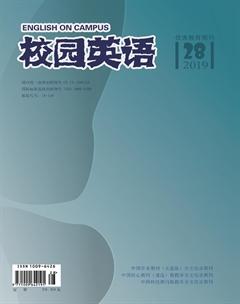Risk Factors of Depression in Postpartum Period
【Abstract】Postpartum depression (PPD) is a serious threat to the physical and mental health of parturients and newborns and the stability of their families.This article analyzes the related risk factors of PPD form psychological and social aspects, Which provides a better way of thinking for the prevention and intervention of PPD.
【Key words】PPD; psychological factors; social factors
【作者簡介】雷燕,川北医学院。
1. Introduction
Postpartum depression(PPD), a common clinical symptom, was first proposed by Pitt in 1968. Since the 1880s, PPD has gained international attention and concern, and was defined by the World Health Organization(WHO) and the American Psychiatric Association(DSM - VI) as the first onset 4~6 weeks postpartum(no previous history of spirit disorder history), symptoms similar to general depression, mainly manifested as sadness, guilt, insomnia, irritability, anxiety, or thoughts of suicide. These symptoms will be aggravated due to lower self-esteem, poor ability to cope, cognitive dysfunction and loneliness.
In fact, 1-1.5 in 10 women will experience depression which is a recognized public health issue in the postpartum period internationally. PPD seriously affects life satisfaction, interpersonal relationships, social function, and maternal and infant association. Some women suffering from PPD have thoughts of hurting baby, compulsive behavior, and in the future there may be 1/4 recurrence( suffer from depression again), with a maximum of 50% .
Most experts agree that the relationship between biological factors and PPD are well established and research results have highly consistency. However, because of the influence of cross cultural elements (e.g. race, region, and culture), there are different conclusions on psychological and social factors. Based on the previous research, this article analyzes the psychological and social risk factors of PPD.
2. Psychological Risk Factors
Women s mental dynamics are key elements in the reaction of the reproductive process, and there are a number of psychological factors that increase the risk of PPD.
One of the most important factors is maternal personality characteristics. PPD occurs mostly in an individual who has a vulnerable personality such as anxiety, sensibility, timidity, obsession or depression. The effect between neuroticism (a neurotic character), assessed during pregnancy, and subsequent PPD is clear. A negative cognitive attributional style was more strongly related to high levels of depressive symptoms when assessed through self-report.
Fragile coping styles, in which individuals dismiss feelings, or manipulate the stressful situation, are psychological risk factors of onset of PPD. Positive coping styles which help to relieve mental stress could reduce the incidence of PPD, while negative coping styles can increase the possibility of PPD.
The psychological state of the pregnant women (for example, prenatal depression or anxiety) is a predictor of PPD. Maternal anxiety and depression can lead to a series of physiological and pathological changes, resulting in psychological imbalance, and become the promoting factors of PPD.
3. Social Risk Factors
Social risk factors such as social support and stressful life events have a significant impact on PPD. Social support, which can be divided into prenatal and postnatal social support, not only provides protection to the individual under stress, but also improves the ability of individuals to address the major life events and reduce emotional disorders. Family support system is essential to new mother and the relationship between the couple is one of the biggest risk factors for the onset of PPD. Having a stressful life event is strongly connected with developing PPD. Significant life events occurring within 6 months of pregnancy or postpartum (such as moving home, losing a job, divorce, and death) increase the incidence of depression.
In addition, education level can be a predictor for women who will suffer PPD . However, educational level accompany other variables simultaneously affect onset of PPD. Sometimes the impact from educational level is not significant.
Recent study find that the gender of the baby is a potential risk factor to PPD. In China, because of the influence of patriarchal feudal ideology, mothers who have baby girls suffer from more depression. In addition, this issue can be also met in India.
4. Conclusion
It is common to experience emotional disorders in postpartum period. During this vulnerable time, more attention should be paid on women, especially if they have the situation as follows: a susceptible personality, negative coping style and prenatal depression or anxiety; lack of social support and a stressful life event. If professionals can find and diagnose the risk factors of PPD earlier, popularize relevant knowledge, conduct timely intervention or treatment, women will smoothly get through this critical period of time in life.
References:
[1]Pitt B..“A typical” depression following childbirth[J]. Br J Psychiatry,1968,114(516):1325.

